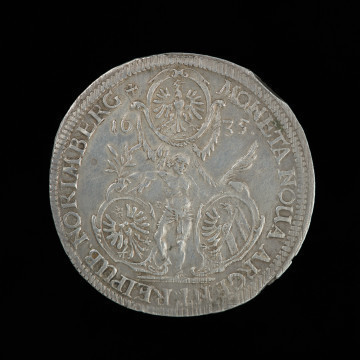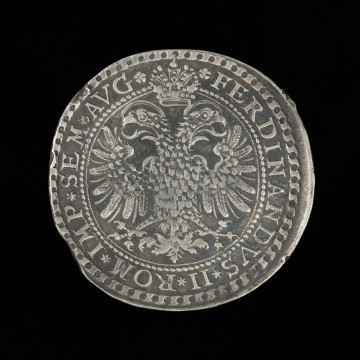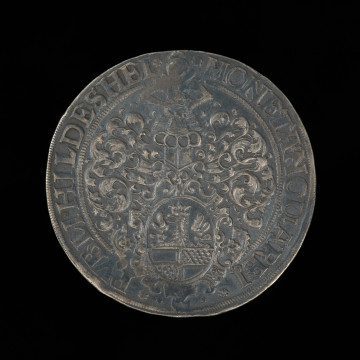
Thaler of the Reich
1624
National Museum in Szczecin
Part of the collection: German coins
In the 16th-17th centuries, the Netherlands was one of the most economically developed and modern areas of Europe. East Frisia, which shared a border with The Netherlands, despite being a German region, shared many similarities with the Dutch model of the government, in which the supreme power of the state was limited by the representatives of local states. Its capital, the city of Emden, like the so-called free cities of the Reich, minted its own thalers with the name of the Catholic Emperor Ferdinand II (1578-1637). This is an interesting fact, given the Protestant nature of the city and the region, as well as the bloody religious war taking place in the Reich at that time. The thalers, which were also used as representative coins, were often made by talented artists. The coin blanks and pistons were carefully prepared to withstand the high impact force of the minting equipment. However, the Emden thaler is not a perfect coin. The minting process itself also left a lot to be desired – some batches were minted cleanly, others were too shallow. The thaler blanks were cut from an ill-prepared sheet, which is evidenced by a crack, probably resulting from spreading the metal, which was too cold. When the coin was struck, the stamp used to make the reverse was quite worn out, which left a mark on the surface. Instead of taking on the elements of the coat of arms, the silver filled in the chipped parts of the piston, creating a scarring effect. However, the thaler was not melted down, because in the process of minting coins during war time, the aesthetics were not particularly important. The Emden coin reflects the turbulent history of the Thirty Years' War, which saw a constant shortage of cash needed to pay the troops, as well as mass issues of thalers, often characterised by poor quality. Coins were needed for the payment of tributes and salaries for foreign and own troops. In fact, during the Thirty Years' War the rule was that an army should be fed by the region, in which it operates. Thus, mercenary soldiers had the commanders' permission to loot the local populace, which was supposed to compensate them for irregular salaries.
Mieszko Pawłowski
Other names
Reichstaler
Author / creator
Object type
coin, money
Technique
minting
Material
silver
Creation time / dating
Creation / finding place
Owner
National Museum in Szczecin
Identification number
Location / status

1624
National Museum in Szczecin

1624
National Museum in Szczecin

1624
National Museum in Szczecin
DISCOVER this TOPIC
Castle Museum in Łańcut
DISCOVER this PATH
Educational path